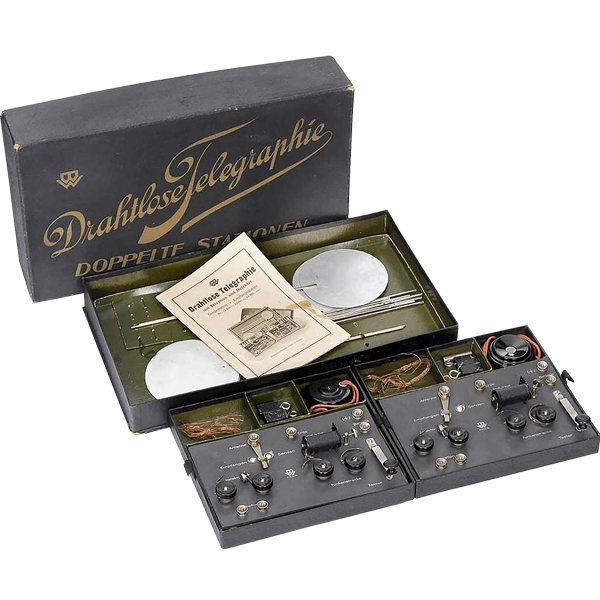
- DE
- EN
- FR


Around 1900, there were a lot of toys that served more for learning and education than for free and carefree play. This was especially true of the exhibits marketed as "teaching aids" in this room. You see experimental kits and physical devices that were all fully functional. Since some of them produced X-ray radiation or electric shocks, they are not children's toys from today's point of view, and they would also be unthinkable in the classroom nowadays.
Which physical toys were there in detail?
The Wimshurst machine or Influence machine produced high voltage.
The Geissler tubes had parts made of fluorescent uranium glass, were artistically mouth-blown and could glow like neon tubes. In combination with an electric motor, they produced fascinating light effects.
The X-ray tubes actually worked and were small devices for children. There were also devices for wireless telegraphy and extensive experimental kits.
The apparatuses were driven by dynamo machines or electric motors, for example.
Many of these teaching aids were dangerous, such as batteries filled with chromic acid. They produced electric shocks, radiation or contained toxic chemicals.
But the fascination was great, because it flashed, glowed, hummed, banged and it also smelled adventurous, for example of ozone. Presumably, Bing did not manufacture the X-ray tubes, Geissler tubes and some others himself, but bought them from educational establishments in the Thuringian region and Saxony and sold them under his own name.
The devices show that scientific innovations were also available as toys within a very short time. Bing's engineers implemented any progress directly and worked on the pulse of time. Because that was exactly what the bourgeoisie of the time wanted and paid for. Here, too, it can be assumed that many of the teaching aids were not only bought for children, but also served as fathers' toys.